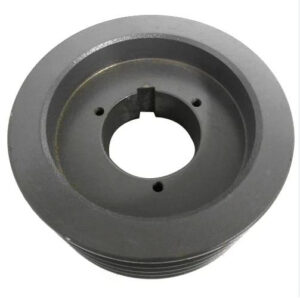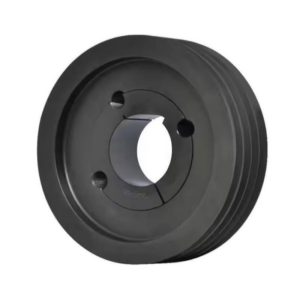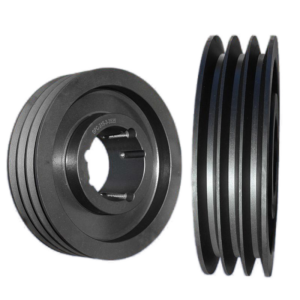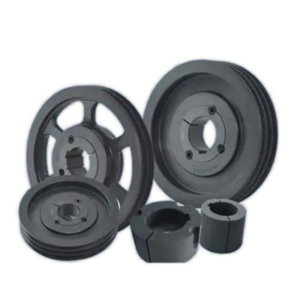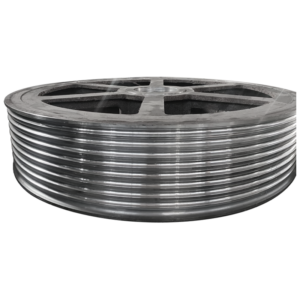Pulleys are fundamental components in mechanical power transmission systems, enabling efficient transfer of motion and force between rotating shafts. They are widely used in industrial machinery, automotive systems, and various mechanical applications. This article explores the key functions of pulleys and their critical applications in different types of equipment.
1. Primary Functions of Pulleys
① Power Transmission
- Pulleys transfer rotational motion from a driving shaft (motor/engine) to a driven shaft (equipment).
- Example: In conveyor belts, pulleys drive the belt to move materials.
② Speed Adjustment
- By varying pulley diameters, speed ratios can be adjusted without gears.
- Formula:Speed Ratio=Diameter of Driver PulleyDiameter of Driven PulleySpeed Ratio=Diameter of Driven PulleyDiameter of Driver Pulley
③ Direction Change
- Crossed belt configurations reverse rotation direction.
- Twisted belts allow non-parallel shaft power transmission.
④ Tension Control
- Idler pulleys maintain belt tension, preventing slippage.
2. Common Types of Pulleys & Their Applications
| Pulley Type | Design Features | Applications |
|---|---|---|
| Flat Belt Pulley | Smooth surface, minimal slippage | Textile machinery, vintage engines |
| V-Belt Pulley | Grooved for better grip | Industrial motors, HVAC systems |
| Timing Pulley | Teeth mesh with belt for precision | CNC machines, automotive camshafts |
| Variable Speed Pulley | Adjustable diameter for speed control | Drills, milling machines |
3. Key Industries Using Pulleys
✔ Automotive Systems
- Serpentine belt pulleys drive alternators, AC compressors, and water pumps.
- Timing belt pulleys ensure precise synchronization of camshafts and crankshafts.
✔ Industrial Machinery
- Conveyor belt pulleys move goods in manufacturing and logistics.
- Pump and compressor drives transfer motor power efficiently.
✔ Agricultural Equipment
- Tractor PTO (Power Take-Off) systems use pulleys to operate attachments.
✔ HVAC & Ventilation
- Belt-driven fans adjust airflow in air handling units (AHUs).
4. Advantages of Using Pulleys
✅ Smooth & Quiet Operation (vs. gear noise)
✅ Cost-Effective Power Transmission
✅ Easy Maintenance & Replacement
✅ Absorbs Shock Loads (reduces motor stress)
5. Selection Criteria for Optimal Performance
- Belt Compatibility (V-belt, timing belt, flat belt)
- Material (Cast iron for durability, aluminum for lightweight needs)
- Load Capacity & Speed (RPM)
- Environmental Conditions (Corrosion-resistant coatings for harsh environments)
Conclusion
Pulleys play a crucial role in power transmission systems by enabling speed control, directional changes, and efficient energy transfer. From heavy industrial machines to precision automotive engines, selecting the right pulley ensures longevity, efficiency, and reduced downtime.

